Some dogs love to jump up when they’re excited or seeking attention. It may be cute the first time around, but it can quickly get out of control without proper training. Dogs don’t mean to cause trouble when they jump; they just want to greet people and play. So, correcting this behavior requires certain training methods to keep your dog content while preventing them from jumping on people.
For this training topic, we’ve consulted Paige Gordon, CPDT (Certified Pet Dog Trainer) with SpiritDog Training.
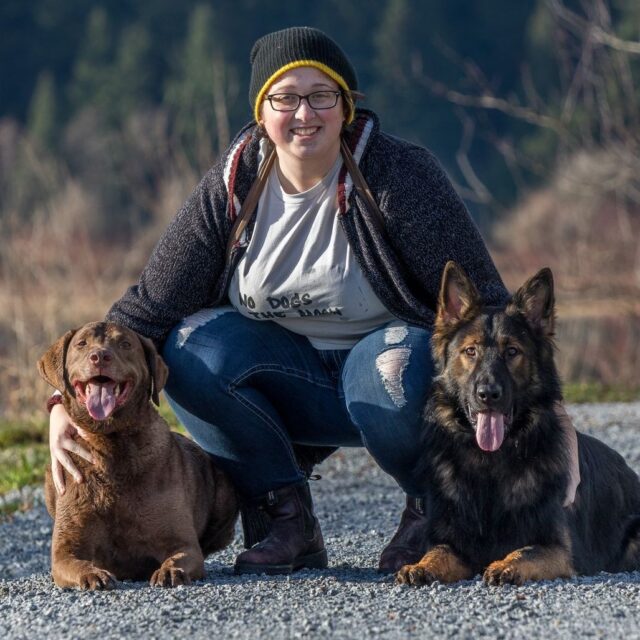
How to Teach Your Dog Not to Jump Up
Dogs are most likely to jump up when you come home or when new people enter their space. Naturally, your dog will get excited and want attention. They may even get too excited to focus and properly listen to commands. So, even if your dog knows the command “sit” or “down,” they may not listen to you when they’re ecstatic.
Paige from SpiritDog Training focuses on changing a dog’s emotional response when you get home rather than working on commands. When you return to your dog, encourage them to sniff, lick, or chew instead of jumping. To do so, you should offer a calming item (like a Kong, lick mat, etc.) as soon as you get home or let your dog out of their crate. You can even scatter treats near your dog if you don’t have a toy to use.
Whichever method you choose, have it easily accessible so you can do it before your dog starts jumping. Your dog may still jump up the first few times, but once they start expecting a snack or toy when you get home, they should look forward to that game instead of jumping up for attention.
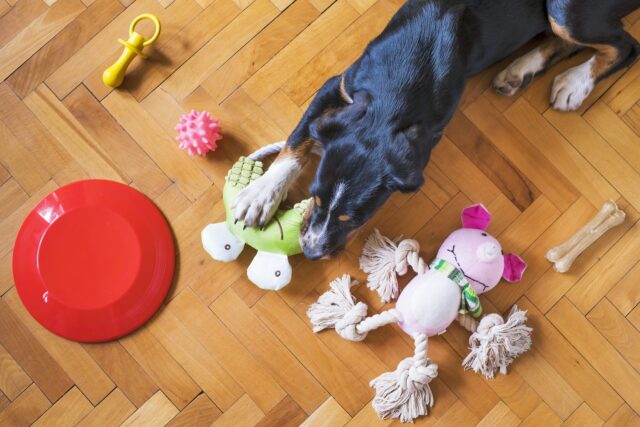
“It is important we still do not get too excited or engage with our dogs when they are jumping on us. When they finish their treats/toy, they will likely still come over to us or our visitors. You can give your dog treats at their level in a standing position, and we want to make sure we deliver it down to them so we aren’t encouraging them to come up for the treat,” Paige says.
This method can also work for dogs who get mouthy when they’re excited. By giving them an interactive toy instead of engaging with them directly, they’ll learn that the toy is what they’re supposed to chew on, not human hands.
Positive Reinforcement vs. Other Training Methods
Paige, along with the other trainers at SpiritDog, focuses on positive reinforcement training. Here are a few reasons why she uses it for her training lessons:
- Research has shown that positive reinforcement is effective because it encourages dogs to repeat good behaviors.
- Positive reinforcement creates a stronger bond between a dog and their human because it shows the dog that training is enjoyable.
- It’s a fun activity for dogs and humans because it’s productive while seeming like a game.
- It’s successful in creating good behaviors since dogs are rewarded when they do something right.
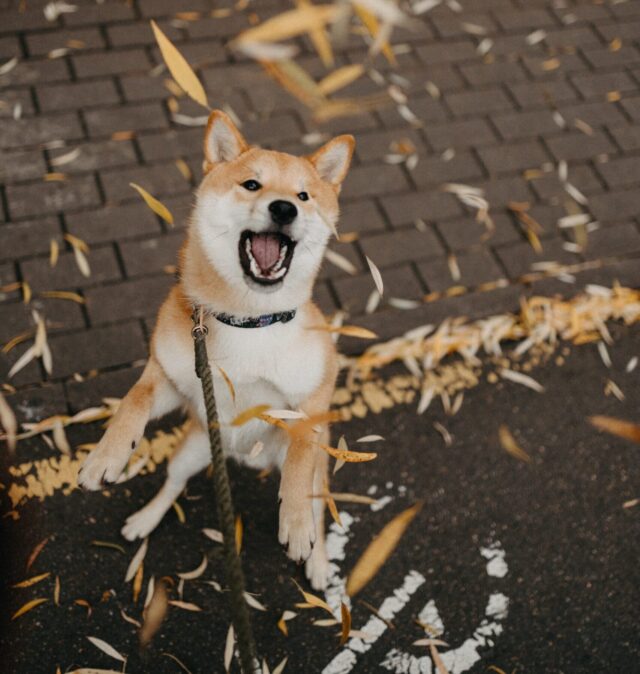
On the other hand, Paige avoids shock collars, choke chains, and any similar training tools. She acknowledges that they can prevent unwanted behaviors short term, but they can do more harm than good. Here are a few reasons Paige from SpiritDog doesn’t recommend those types of training:
- These tools could cause emotional harm, like anxiety, fear, and aggression, or physical harm, such as neck injuries, burns, and cuts.
- They can damage the bond between a human and their dog because dogs become fearful when punished.
- Even though they can suppress the behavior at first, they don’t get to the root of the problem. Dogs may not understand why they’re being punished, leading to frustration and confusion.
- There are more humane methods available, so there’s no need to rely on punishing tools.
If you need help getting your dog to keep their paws on the floor, check out SpiritDog Training’s Perfect Obedience Bundle. of courses. Not only will it help you teach your dog to stop jumping up, but it will also help you train other behaviors like basic obedience and walking nicely on a leash.
SpiritDog Training is a company that offers online training courses for dogs of all ages, breeds, and sizes. It was founded by Steffi Trott, who has been training dogs both in person and online since 2013. The most important part of in-person dog training is the work you do with your dog after sessions, so SpiritDog Training’s online courses are a way for you to focus on one-on-one training with your dog without needing to visit a physical location.
When you sign up for SpiritDog Training, you can access your selected classes at any time so you can work through them at your own pace. Some of the training bundles include puppy training, general obedience, reactivity, and loose-leash walking. You can also ask questions to a professional trainer at any point once you sign up.
Frequently Asked Questions Answered By SpiritDog Training
Is a Puppy Too Young to Train?
Paige assures new pet parents that dogs are never too young to train. She says:
“Our puppies are like little sponges, they’re constantly learning from their environment and experiences. If we start our training early, we can help our puppy develop good habits and prevent bad behaviors from forming. It is important, however, to keep in mind that puppies have short attention spans, so training sessions should be short and focused. Training should also be fun and positive!”
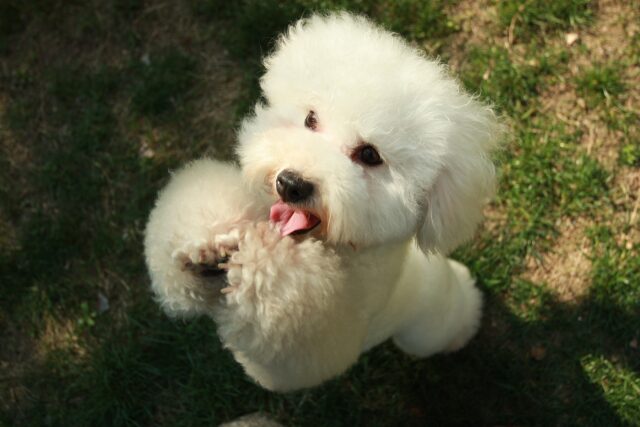
What if My Dog Isn’t Treat-Motivated?
First, you should make sure your dog is in good health. If they’re not usually picky, there could be an underlying health issue causing a sudden disinterest in treats. Then, if everything seems fine, consider the type of treat you’re using.
“Many dogs actually won’t be very interested in a hard, dry biscuit, but will be happy to take things like freeze dried raw, cheese, or whole meat treats or other soft, stinky dog treats,” Paige suggests. “For our dogs that still won’t take treats even when we are offering something good, we may need to build their comfort and their food motivation. We want to stop putting them into situations where they are refusing food (where we know they won’t eat our treats) and instead set them up in easy situations like an empty room at home with no distractions. Give them treats a few times a day for no reason at all until they’re happy to do so!”
Once your dog is taking treats from you, you can try different environments with more distractions. It may be a gradual process for some dogs, but food motivation is an important aspect of positive reinforcement training.
What Should I Do if My Dog Doesn’t Understand the Training?
Not every dog can pick up on new training right away, so if this happens, Paige says:
“If our dog isn’t understanding what we want, usually we are asking too much of them too soon! We can fix this by breaking things down into smaller steps or lowering the criteria to make things a bit easier for them, and slowly working our way back up.”
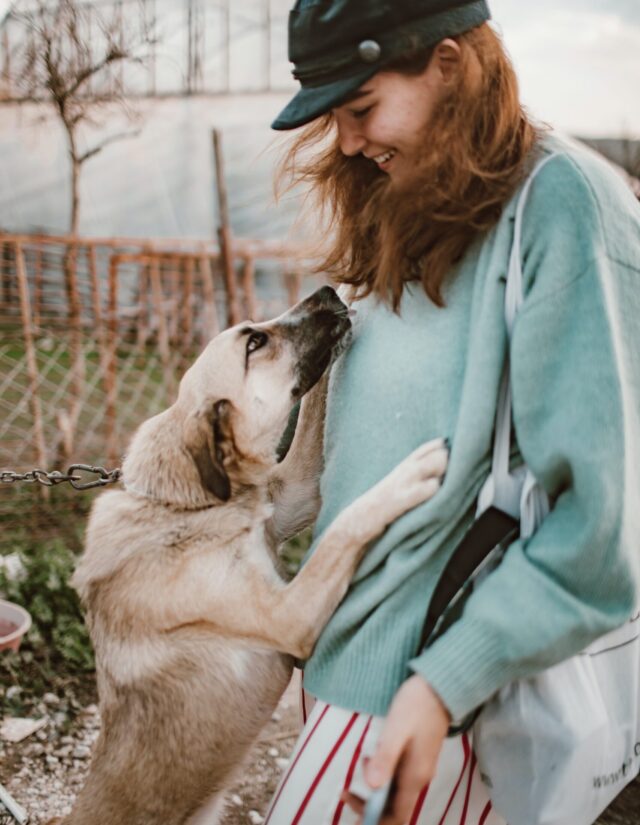
What Should I Do if My Dog Isn’t Responding to the Right Command?
Some dogs take longer to learn commands than others. If they aren’t responding to a command, they may not fully understand it yet. Paige suggests:
“Make sure you are using a clear and consistent command, and that you have taught your dog what it means. Our dog should be able to do something at least 80% of the time before we raise the criteria of what we’re asking- like moving to a more distracting environment. If your dog is really having trouble understanding a complex command, try breaking it down into smaller steps.”
Final Thoughts
If your dog won’t stop jumping up, practice the tips in this article to set them up for success. Paige from SpiritDog Training recommends offering your dog a chew or puzzle toy when they get overly excited instead of telling them to “sit” because it gets them in the habit of doing something calming instead of jumping up. With lots of patience, repetition, and positive reinforcement, you should start to notice your dog jumping on people less.

 Toledo, United States.
Toledo, United States.
